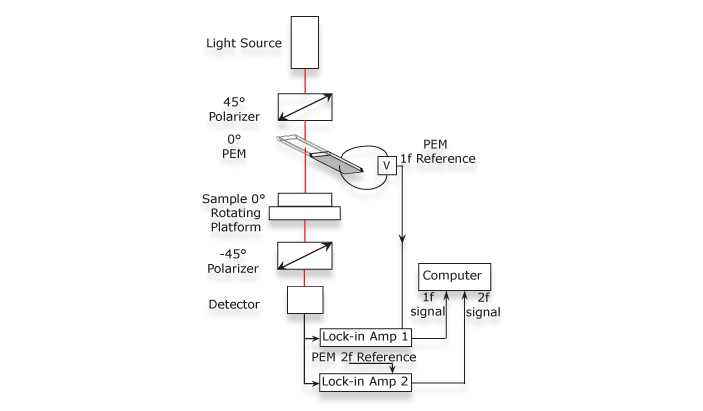Waveplate Measurement
Wave-plates are an important optical component for light polarization-related measurements. The PEM can be employed to determine both the amplitude and orientation of the retardation of a wave-plate.
SET-UP EQUATION
I1f: 1f signal
I2f: 2f signal
A0: PEM’s retardation setting
J2(A0): 2nd order Bessel function
J1(A0): 1st order Bessel function
In this set-up, either the fast axis or the slow axis of the quarter-wave plate is required to be parallel to the PEM’s optical axis. The positive and negative signs of I2f, after calibration, indicate which axis (slow or fast) it is.
APPLICATIONS
Wave-plate inspection and characterization
SUGGESTED PRODUCTS:
I/FS50 with NIO-1
Exicor® Birefringence Measurement Systems
FURTHER READING
J. C. Kemp, Basic Laboratory set-up for various measurements possible with the photoelastic modulator, Application note, Hinds Instruments, Inc. (1975)
T. C. Oakberg, “Measurement of Wave-plate Retardation Using a Photoelastic Modulator,” SPIE, 3121, 19-22 (1997)
Contact us for more information on PEMs and Waveplate Measurements.

